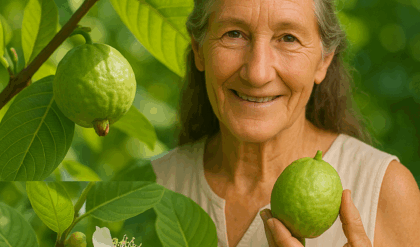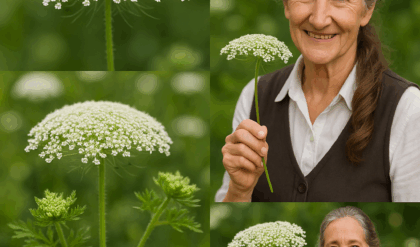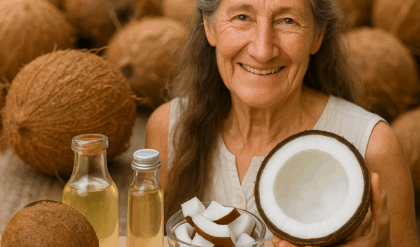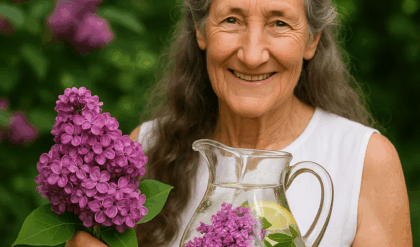Albizia julibrissin, known as the silk tree, mimosa, or “Tree of Happiness,” is a stunning tree with fern-like leaves and vibrant pink puffball flowers, celebrated for both its ornamental charm and medicinal potential. Native to Asia, this tree’s bark, flowers, and leaves have been used for centuries in traditional Chinese medicine to ease anxiety, promote sleep, and support overall well-being. If you’re eager to tap into its benefits, this guide provides clear, practical steps to collect, prepare, and store Albizia’s parts safely and sustainably. Whether you’re a budding herbalist or simply curious, you’ll learn how to preserve this tree’s gifts for year-round use while respecting its ecosystem.
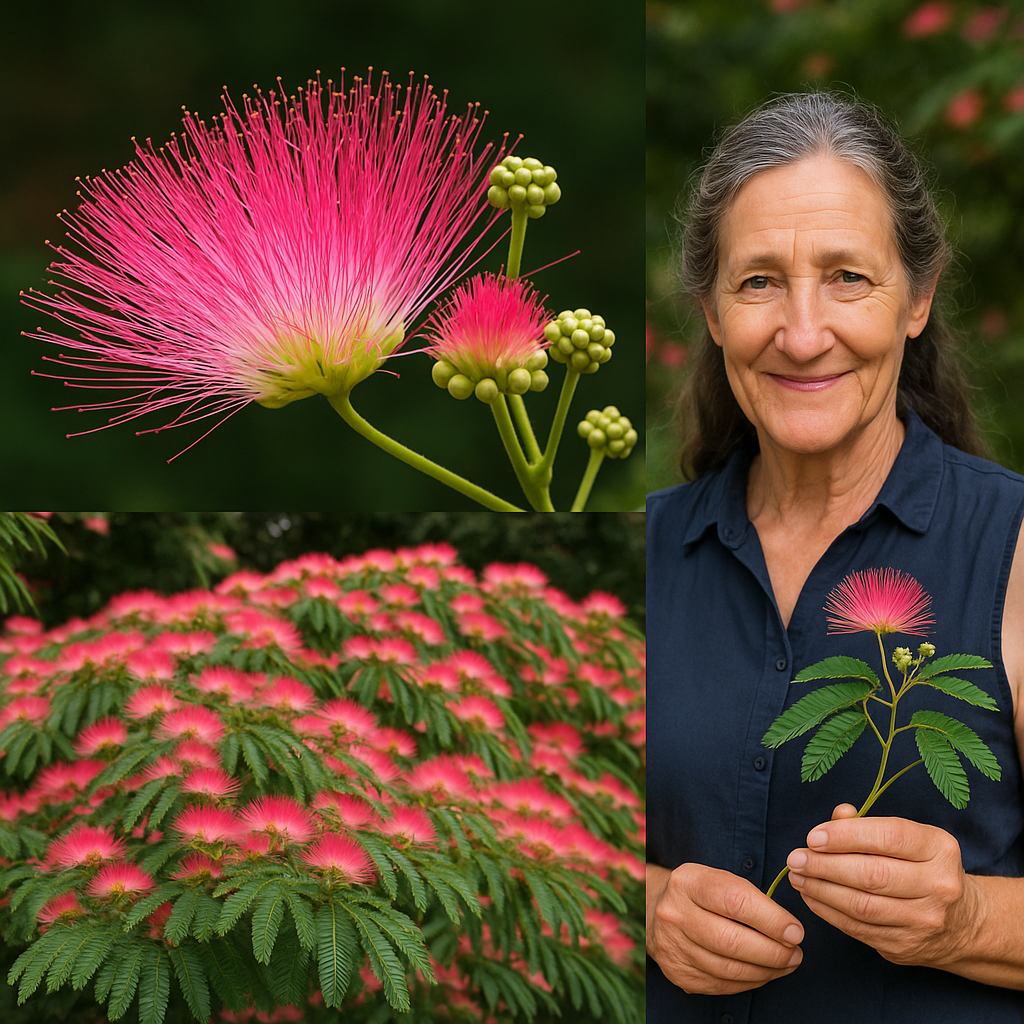
Why Harvest Albizia Julibrissin?
The bark, flowers, and leaves of Albizia julibrissin are prized for their therapeutic properties. The bark is known for its calming, grounding effects, often used to relieve stress and improve mood. Flowers are uplifting, aiding sleep and emotional balance, while leaves support detoxification and immunity. Harvesting these parts yourself ensures a chemical-free, sustainable supply for teas, tinctures, or topical remedies. Plus, it’s a rewarding way to connect with nature and reduce waste by using what’s available in your environment. However, responsible harvesting is key to protecting the tree and its habitat, especially since Albizia can be invasive in some regions.
Collecting Albizia Bark
When to Collect:
Harvest bark in early spring or late autumn when sap flow is minimal, reducing stress on the tree. These seasons ensure the bark is rich in active compounds and easier to peel.
How to Collect:
- Choose Healthy Trees: Select mature, vigorous branches or small trunks from trees free of disease, damage, or pesticide exposure. Avoid harvesting from young or stressed trees.
- Use Proper Tools: With a clean, sharp pruning knife or shears, cut a small branch (1-2 inches thick) to minimize harm. Never strip bark directly from the trunk, as this can damage the tree’s vascular system and invite disease.
- Peel Carefully: Remove the rough outer bark to access the smooth, medicinal inner bark. Collect thin strips to preserve the tree’s health. Harvest sparingly, taking only what you need from multiple branches rather than one area.
- Sustainable Practice: Limit harvesting to 10% of a tree’s bark to ensure its survival. If possible, prune during routine maintenance to combine efforts.
Preparation:
- Cleaning: Rinse bark strips under cool, running water to remove dirt, insects, or debris. Pat dry with a clean towel.
- Cutting: Slice or chop the bark into small, uniform pieces (1-2 inches long) to speed drying and make it easier to process for teas or tinctures.
- Drying: Spread bark pieces in a single layer on a clean tray or wire rack in a warm, dry, shaded area with good airflow (e.g., a well-ventilated room). Avoid direct sunlight to preserve active compounds. Turn pieces every 1-2 days to ensure even drying. Bark is fully dry when it snaps easily and feels brittle, typically taking 7-10 days depending on humidity.
Storage:
- Containers: Store dried bark in airtight glass jars or resealable bags to protect against moisture and pests. Add a food-safe desiccant packet for extra protection in humid climates.
- Conditions: Keep in a cool (below 70°F/21°C), dark place like a pantry to maintain potency. Label containers with the harvest date and part name.
- Shelf Life: Properly stored, dried bark remains effective for up to 1 year. Check periodically for mold or off odors; discard if compromised.
Collecting Albizia Flowers
When to Collect:
Harvest flowers in late spring to early summer (typically May to July) during peak bloom, when they’re fully open, vibrant, and fragrant. Morning harvests after dew has dried are ideal to avoid moisture-related mold.
How to Collect:
- Select Vibrant Flowers: Choose bright pink, fluffy flower heads free of wilting or browning. Leave some flowers on the tree to support pollinators (like bees and hummingbirds) and ensure seed production.
- Gentle Harvesting: Use clean scissors or fingers to snip or pluck flower heads, including the long stamens, avoiding stems unless needed. Collect only dry flowers to simplify drying.
- Eco-Friendly Approach: Harvest no more than 20-30% of a tree’s flowers to maintain its health and ecological role. A single 16-ounce jar of flowers is often enough for a year’s supply of herbal preparations.
Preparation:
- Cleaning: Gently shake flowers to dislodge insects or debris. Avoid washing unless heavily soiled, as water can encourage mold. If washing is necessary, rinse briefly and pat dry immediately.
- Inspecting: Discard any flowers with signs of mold, pests, or discoloration to ensure quality.
Storage:
- Drying: Spread flowers in a single layer on a drying rack, breathable mesh, or paper towels in a warm, shaded, well-ventilated area. Avoid stacking to prevent clumping. Flowers typically dry in 3-5 days, becoming crisp and retaining their pink hue. Note: Air drying or using a dehydrator at low temperatures (95°F/35°C) is recommended, as higher heat can degrade delicate compounds.
- Containers: Store dried flowers in airtight glass jars or vacuum-sealed bags to protect their delicate structure. Use dark-tinted containers to shield from light.
- Conditions: Keep in a cool, dark, dry place. Label with the harvest date.
- Shelf Life: Dried flowers maintain potency for up to 6 months. Discard if they develop a musty smell or lose color.
Collecting Albizia Leaves
When to Collect:
Harvest leaves during the growing season (late spring to early summer) when they’re lush, green, and nutrient-rich. Early morning is best, as leaves are hydrated and full of vitality.
How to Collect:
- Choose Healthy Leaves: Select mature, undamaged leaves with a vibrant green color. Avoid yellowing, wilted, or pest-damaged leaves.
- Harvesting Method: Use clean scissors or fingers to snip leaves, including the petiole (stem), from branches. Harvest sparingly, taking no more than 20% of a tree’s foliage to support photosynthesis and growth.
- Responsible Practice: Collect from multiple branches to distribute impact. Avoid harvesting from trees in polluted areas or near roadsides.
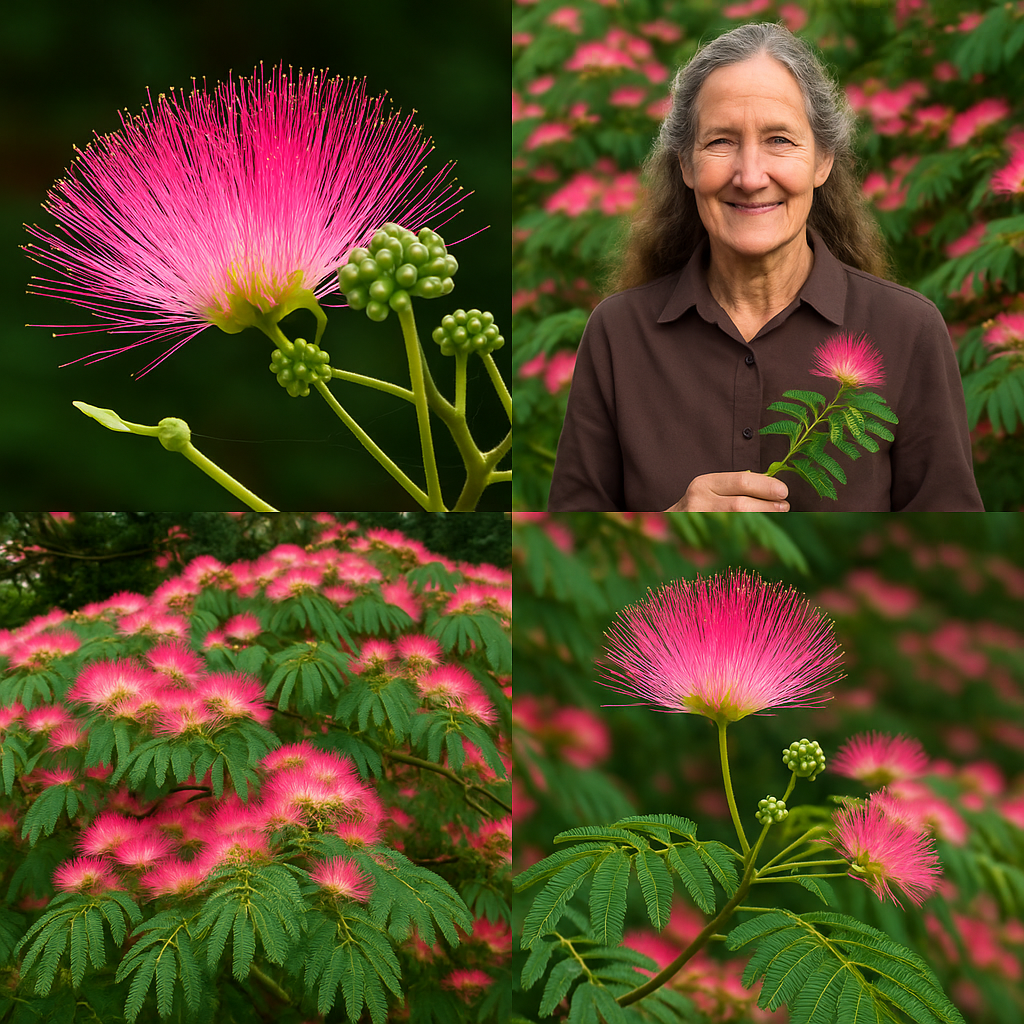
Preparation:
- Washing: Rinse leaves gently under cool water to remove dust, insects, or debris. Shake off excess water and pat dry with a clean towel to prevent mold during drying.
- Inspecting: Check for any signs of mold, spots, or pests, discarding affected leaves.
Storage:
- Drying: Spread leaves in a single layer on a drying rack or tray in a warm, shaded, well-ventilated area. Turn leaves every 1-2 days to ensure even drying. Leaves are fully dry when crisp and crumbly, typically in 3-7 days. A dehydrator set to 95–110°F (35–43°C) can speed the process while preserving nutrients.
- Freezing (Alternative): For fresher flavor and color, blanch leaves in boiling water for 1 minute, then immediately plunge into ice water to stop cooking. Pat dry, place in airtight freezer bags, and remove excess air. Frozen leaves are ideal for smoothies or topical preparations.
- Containers: Store dried leaves in airtight glass jars or resealable bags. For frozen leaves, use freezer-safe bags or containers.
- Conditions: Keep dried leaves in a cool, dark, dry place; store frozen leaves in a freezer at 0°F (-18°C). Label with the harvest date and method.
- Shelf Life: Dried leaves last up to 1 year; frozen leaves are best used within 6 months for optimal quality.
General Tips for Collecting, Preparing, and Storing Albizia Parts
🌿 Harvest Responsibly: Albizia julibrissin is invasive in parts of the United States (e.g., from New York to Florida and west to Texas). Check local regulations before harvesting, especially in wild areas, and avoid spreading seeds, which can exacerbate its invasiveness. Harvest only from trees on your property or with permission.
🧼 Avoid Contaminants: Collect from trees free of pesticides, road pollution, or industrial runoff. Organic, untreated trees are safest for medicinal use.
🏷️ Label Clearly: Mark containers with the plant part, harvest date, and preparation method (e.g., “Albizia Bark, Dried, May 2025”). This helps track freshness and usage.
🔍 Monitor for Spoilage: Check stored bark, flowers, and leaves monthly for mold, moisture, or off odors. Discard any compromised material to avoid health risks.
⚠️ Safety Precautions: Consult a healthcare professional before using Albizia, especially if pregnant, nursing, or on medications (e.g., sedatives), as it may enhance drowsiness or interact with drugs. Avoid use before surgery due to potential central nervous system effects.
How to Use Albizia Bark, Flowers, and Leaves
Once prepared, Albizia parts can be used in various ways:
- Bark Tea: Boil 1 teaspoon dried bark in 1 cup water for 20 minutes, strain, and drink 1-2 times daily for stress relief or mood support.
- Flower Tea: Steep 1 teaspoon dried flowers in 1 cup hot water for 10 minutes. Drink up to twice daily for insomnia or emotional uplift.
- Leaf Tea: Simmer 1 teaspoon dried leaves in 1 cup water for 5-10 minutes. Drink once daily to support detoxification or immunity.
- Topical Paste: Grind dried bark or leaves into a powder, mix with water to form a paste, and apply to minor wounds or skin irritations for 20-30 minutes.
- Tinctures: Soak dried bark or flowers in alcohol (e.g., vodka) for 4-6 weeks, shaking daily, then strain. Use 3-5 drops up to three times daily, diluted in water, for anxiety or sleep support (consult an herbalist for exact dosing).
Why This Matters
Harvesting Albizia julibrissin connects you to a centuries-old tradition of natural healing, offering affordable, sustainable remedies for modern ailments like stress, insomnia, and inflammation. By collecting and preparing its bark, flowers, and leaves thoughtfully, you ensure a high-quality supply while honoring the tree’s ecological role. This process also fosters mindfulness, encouraging you to engage with nature intentionally and respectfully.
Disclaimer: The information provided is for educational purposes only and is not medical advice. Always consult a healthcare professional before using Albizia julibrissin, especially if you have medical conditions, are pregnant, or take medications. Individual reactions vary, and excessive use may cause side effects like drowsiness. Harvest and use responsibly to protect yourself and the environment.
Start Your Albizia Journey Today
Ready to harness the calming, uplifting power of Albizia julibrissin? Next time you spot a mimosa tree’s pink blooms or fern-like leaves, gather its parts with care and transform them into potent remedies. From soothing teas to healing pastes, your homemade preparations will bring nature’s wisdom into your daily life. Share this guide with fellow herbal enthusiasts, and let Albizia’s “happiness” inspire a greener, healthier you—start collecting today!

